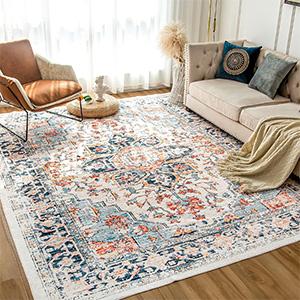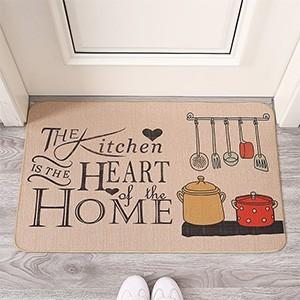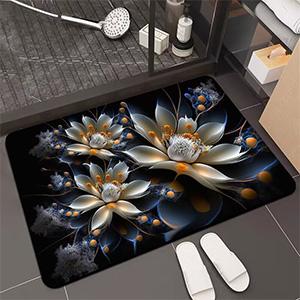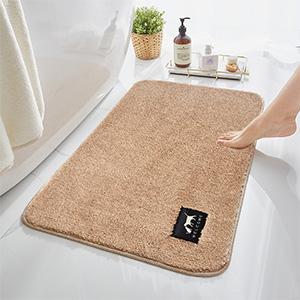Superb Performance Endowed by Hard Texture
1. Material Revealed: Advantages of Craftsmanship and Raw Materials Behind the Hard TextureHard diatomaceous earth mats are mainly made of "high-purity diatomaceous earth + inorganic adhesive" through a high-pressure molding process. Different from the loose texture of ordinary soft diatomaceous earth mats, they have a denser structure and higher hardness (reaching 3-4 on the Mohs hardness scale), which is not easy to break or shed residues. High-quality hard diatomaceous earth mats contain more than 70% diatomaceous earth, retaining the natural porous characteristics of diatomaceous earth—each gram of diatomaceous earth has hundreds of millions of pores on its surface, with pore sizes concentrated between 0.1-1 micron, laying a solid foundation for efficient water absorption and moisture resistance. The matched inorganic adhesive (such as food-grade sodium silicate) is odorless and free of formaldehyde emissions. After authoritative testing, the content of harmful substances is far lower than the standards specified in GB 18587-2017 Limits of Harmful Substances Emitted from Carpets, Carpet Cushions and Carpet Adhesives for Indoor Decoration and Renovation Materials, making it safe for families with the elderly, children and pets.
In terms of appearance, hard diatomaceous earth mats are mostly 1.5-3cm thick. Their surfaces are often treated with matte or fine frosted finishes to avoid dazzling reflections. The colors are mainly neutral tones such as light gray, off-white and light brown, which are suitable for various home styles including modern minimalism, Nordic style and new Chinese style. Some styles also adopt laser engraving technology to create simple patterns like geometric patterns and linear patterns, combining practicality and decorativeness. These patterns will not fall off due to friction and remain beautiful even after long-term use.
2. Core Functions: Superb Performance Endowed by Hard Texture
1. Rapid Water Absorption + Long-lasting Dryness, a Nemesis of Moisture
Relying on its dense micron-sized pores, the hard diatomaceous earth mat has a much faster water absorption speed than ordinary mats. Test data shows that its water absorption rate can reach 2-3 times its own weight within 1 minute. After taking a bath in the bathroom, when you step on it with bare feet, the residual water on the soles can be completely absorbed within 5 seconds, with no water left on the surface. More importantly, its drying speed is also excellent—under ventilated conditions, a fully water-absorbed mat can dry naturally within 2-3 hours. Even in the plum rain season in southern China or the humid environment of the bathroom, it can avoid the problem of traditional mats "getting wetter with use and generating odors", keeping the mat surface dry and clean for a long time.
2. High Hardness + Wear Resistance, Enhanced Durability
Hard texture is one of its core advantages. Compared with soft diatomaceous earth mats that are prone to dents from stepping and edge damage, hard diatomaceous earth mats have strong pressure resistance. Daily stepping and light pressure from furniture (such as bathroom stools) will not cause deformation. Their surface has excellent wear resistance—even scratching with hard objects like keys will not leave obvious scratches. Under normal household use scenarios, their service life can reach 3-5 years, which is 1.5-2 times that of soft diatomaceous earth mats. They are especially suitable for high-frequency stepping areas such as foyers and kitchens.
3. Anti-bacterial & Anti-mildew + Easy Cleaning, Saving Effort and Worry
Diatomaceous earth itself has natural antibacterial properties. Its porous structure can absorb and inhibit the growth of common bacteria such as Escherichia coli and Staphylococcus aureus (with an antibacterial rate of over 99%). Combined with the characteristic of hard texture that is not easy to hide dirt, it effectively solves the problems that cotton mats are prone to mildew and soft diatomaceous earth mats are easy to trap dust. In terms of cleaning, it is extremely convenient: daily dust can be removed by wiping with a dry cloth or gently vacuuming; if there are footprints or stains, wipe with a damp cloth dipped in a small amount of neutral detergent, and there will be no traces after drying. No water washing or machine washing is needed, which avoids the problems of soft diatomaceous earth mats clumping and reduced water absorption after washing, greatly reducing maintenance costs.
4. Anti-slip Stability, Safety Guarantee
The bottom of hard diatomaceous earth mats is usually compounded with a layer of natural rubber anti-slip pad or treated with serrated anti-slip patterns, with an anti-slip coefficient ≥ 0.65, far higher than that of soft diatomaceous earth mats (with an anti-slip coefficient of about 0.4-0.5). Even on the wet floor of the bathroom, the mat can be firmly attached to the ground and will not shift due to water on the soles or dragging, effectively reducing the risk of slipping for the elderly and children. At the same time, the hard texture will not cause aging and cracking of the bottom after long-term use, and always maintain a stable anti-slip effect. It is suitable for floor heating environments and will not release harmful substances or deform under high temperatures.
3. Scene Adaptation: An Ideal Choice for High-frequency Use Areas
The durability and moisture resistance of hard diatomaceous earth mats make them a "must-have item" for many high-frequency use areas in homes. When used at the foyer, it can quickly absorb the muddy water on the soles of shoes on rainy days to prevent dirt from being brought into the room and soiling the floor. Its high hardness can withstand daily stepping with shoes and is not easy to wear. The bathroom door is a core scene—its rapid water absorption capacity can prevent water stains from spreading to the living room, and the hard texture is not afraid of erosion by the humid bathroom environment. When placed next to the kitchen sink, it can timely absorb splashed water stains and oil stains, and is easy to clean and wear-resistant, avoiding the problem that traditional mats are difficult to clean due to oil penetration. In addition, it can also be used in water-prone areas such as the balcony laundry area and toilet door, and even as a pet mat to absorb water on the pet's paws and keep the room dry.
It can be seen from the comparison that hard diatomaceous earth mats have significant advantages in water absorption speed, durability and cleaning convenience. They are especially suitable for families that demand "efficient moisture resistance and long-term durability", making up for the shortcomings of soft diatomaceous earth mats that are easy to damage and cotton mats that are difficult to clean.
5. Selection and Maintenance: Choose and Use Properly to Extend Service Life
1. Selection Key Points
Check Raw Materials and Craftsmanship: Prioritize products with diatomaceous earth content ≥ 70%, check the test report to ensure no formaldehyde, heavy metals and other harmful substances. Observe whether the surface is flat, the edges are free of cracks, and there is no obvious depression when pressed. Avoid buying low-quality products that are loose and easy to shed residues.
Pay Attention to Anti-slip Design: Choose styles with rubber anti-slip pads or anti-slip patterns at the bottom, and ensure the anti-slip coefficient ≥ 0.6. You can check the product parameters or conduct on-site tests (gently push the mat, and it should not shift obviously).
Choose Size and Color: For the foyer, it is recommended to choose a size of 60x90cm or larger to cover the stepping range of the soles. For the bathroom door, choose a size of 40x60cm or larger to fit the door width. Prioritize light colors as they look cleaner and are more stain-resistant than dark colors (stains on light colors are easier to detect and clean).
2. Maintenance Tips
Avoid long-term soaking in water. Although it is waterproof, long-term water accumulation may affect its water absorption performance.
Do not use hard objects such as steel wool or hard brushes for cleaning, so as not to damage the surface structure and reduce water absorption capacity.
Regularly (every 1-2 months) place it in a ventilated area to dry for 1-2 hours, which can restore the adsorption capacity of the pores. Avoid direct sunlight to prevent surface cracking.
If there are slight scratches on the surface, gently polish with fine sandpaper, which will not affect the overall performance.
When not in use for a long time, store it flat in a dry and ventilated place. Avoid heavy pressure or folding to prevent deformation.




